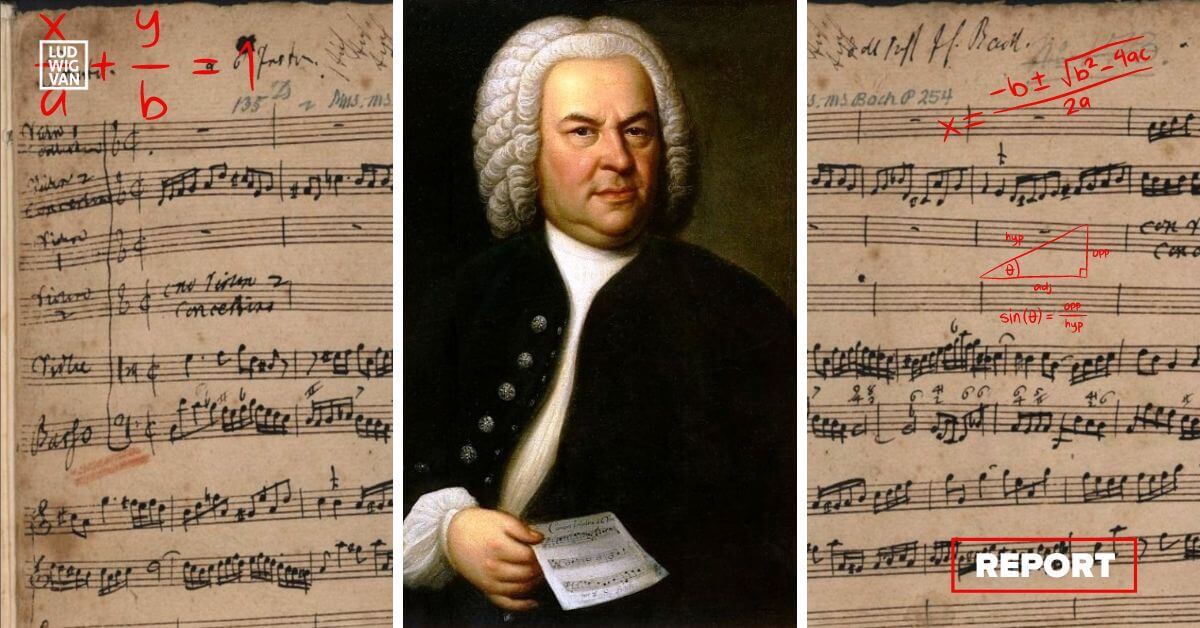
Great music can take the listener into a different state of mind and much more; that’s not news to classical music lovers. Can that reaction be quantified and described by scientific means? That’s what researchers in the US have attempted to find out.
A recent paper in the journal Physics talks about a study by researchers from the University of Pennsylvania using a mathematical network model to analyze the works of J.S. Bach.
The Study
Network analysis has been used to model the behaviour of interconnected units within a system, such as an electrical power grid.
Why Bach?
Bach’s work is already built on mathematical concepts, so it’s relatively easy to analyze. Given the composer’s prolific output, it was also easy to include hundreds of different types of compositions into their study.
The researchers used data from the network they created to measure note patterns and their frequency. They looked at it as a kind of network made up of the connections between notes. From it, they were able to quantify what they call the amount of information that is delivered to a listener using a concept called Shannon entropy.
Shannon entropy, so called by its inventor Claude Shannon in the 1948 paper A Mathematical Theory of Communication, can be explained by complex mathematics. The concept boils down to this: it’s a way of measuring uncertainty. If you have partial information about a system, how much uncertainty is there over a specific event occurring?
It sounds abstract; how does it apply to music?
What’s Entropy Got To Do With It?
In the end, the researchers were able to find commonalities between the information load of different types of compositions. Different types of compositions contained differing amounts and patterns of information. Simple choral pieces, for example, could be distinguished from complex fugues by the network patterns that emerged.
A chorale had a low entropy rate, where a toccata and prelude displays a high degree of entropy. The researchers link that data with the way the piece is meant to be experience. A chorale piece, sung in a group, is designed for reflection and meditation, and is easily understood. A fugue, in contrast, was written to entertain and impress, and receives a more complex reaction in response.
Their analysis allowed them to go a step further, and look at features that communicated the best (the most information) to listeners.
Music Delivers Its Message
Human beings, being what we are, throw a curveball into the issue.
“Humans are imperfect learners,” says Suman Kulkarni, who led the study.
Their research, therefore, had to consider the flawed way that we infer the data as opposed to the way it is actually played. The brain tends to simplify the details in order to process the information more quickly and efficiently.
However, when it comes to the music of Bach, the difference between perception and original was much smaller than it was when compared to data from networks that were generated randomly. What that suggests, in essence, is that music gets its message across.
In terms of the data, the researchers observed that clustering and repeated patterns seemed to offer a reason for that phenomenon. Those patterns are efficient at conveying the information.
It’s an interesting start, and one the researchers hope to continue with more complicated and multilayered network models that separate out the different elements of music, such as melody, rhythm, and counterpoint. In addition, the way we perceive music should be another direction for future research. Does music training or culture play a significant role?
There is just something about music that communicates to us like nothing else… and science is determined to find out what it is.
#LUDWIGVAN
Get the daily arts news straight to your inbox.



